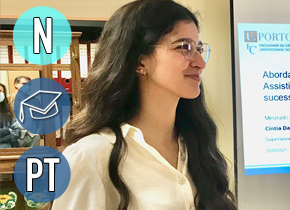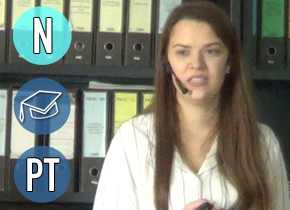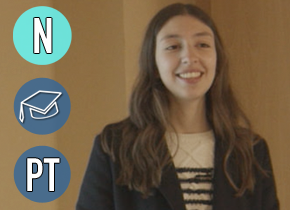Approach to Medically Assisted Procreation Techniques and Clinical/Laboratorial Results of Successive Oocyte Donations
Abordagem às Técnicas de Procriação Medicamente Assistida e aos Resultados Clínicos/Laboratoriais de Sucessivas Doações de Ovócitos
Ribeiro, C.1,2
1) Faculty of Sciences of University of Porto, Porto, Portugal; 2) Procriar – Centro de Obstetrícia e Medicina da Reprodução do Porto, Porto, Portugal.
DATES

CITE THIS VIDEO
Ribeiro, C. (2021, November 29). Approach to Medically Assisted Procreation techniques and clinical/laboratorial results of successive oocyte donations [Master’s dissertation, University of Porto]. https://academy-on.com/videos/cintia-ribeiro-n-3
SYNOPSIS
In this defense, an approach was made to the techniques of Medically Assisted Procreation applied in an internship inserted in the Procriar clinic. Furthermore, an approach to the impact that successive cycles of ovarian hyperstimulation has on clinical and laboratory parameters in a population of donors, was also carried out.
Nesta defesa foi realizada uma abordagem às técnicas de Procriação Medicamente Assistida aplicadas num estágio inserido na clínica Procriar. Para além disso, foi também realizada uma abordagem ao impacto que sucessivos ciclos de hiperestimulação ovárica têm em parâmetros clínicos e laboratoriais, numa população de dadoras.
ABSTRACT
The achievement of a pregnancy implies the success of a sequence of complex events, not only in the female reproductive system, but also in the male reproductive system. If, after 12 months of regular and unprotected sexual intercourse, the couple does not achieve a pregnancy, an infertility condition is recognized. However, with the advent of Assisted Reproductive Technology (ART) treatments and techniques, many causes of infertility can be diagnosed and treated. The treatments comprise the oocyte stimulation protocols, sperm processing, intrauterine insemination techniques, or in vitro fertilization techniques and intracytoplasmic sperm injection, culminating with an insemination or embryo transfer. The appearance of embryo biopsy, and consequent genetic analysis, allowed the selection of euploid embryos. Surgical techniques of sperm collection allowed men, with azoospermia or oligoasthenoteratozoospermia, to become fathers. ART technologies have also allowed single women, or couples of women, to embrace a maternity project. Furthermore, with the advance of science, the cryopreservation of female and male gametes, and embryos, has become feasible and safe, allowing not only fertility preservation, but also cryopreservation of supernumerary embryos, and the creation of gamete donor banks. There is a notorious increase in the number of beneficiaries resorting to gamete banks due to the inability to produce or poor quality of their own gametes. Regarding female gametes, the same donor may carry out several donation cycles. Consequently, it is important to understand the impact that successive donation cycles, from the same donor, have on the clinical and laboratory parameters. This study allowed the conclusion that, throughout three donation cycles, there was an increase in the gonadotropin dose administrated, with a consequent raise in the number of oocytes recovered, without compromising the quality of the gametes, nor the general state of the donor health.
gametes, nor the general state of the donor health. A concretização de uma gravidez implica o sucesso de uma série de eventos complexos do aparelho reprodutor feminino e masculino. Se após 12 meses de relações sexuais regulares e desprotegidas o casal não alcançar uma gravidez, um quadro de infertilidade é considerado. Todavia, com o aparecimento dos tratamentos e técnicas de PMA (Procriação Medicamente Assistida) muitas causas de infertilidade podem ser diagnosticas e tratadas. Os tratamentos iniciam-se com protocolos de estimulação ovocitária, processamento espermático, de técnicas de inseminação intrauterina, ou técnicas de fertilização in vitro e injeção intracitoplasmática de espermatozoide, culminado na inseminação propriamente dita ou na transferência embrionária. O aparecimento da biópsia embrionária e consequente análise genética, permitiu a seleção de embriões euploides. Técnicas cirúrgicas de recolha espermática permitiram que, homens azoospérmicos ou oligoastenoteratozoospérmicos pudessem ser pais. As tecnologias de PMA permitiram que mulheres sem parceiro sexual, ou casais de mulheres vissem o seu projeto de maternidade concretizado. Para além disso, a criopreservação de gâmetas femininos e masculinos e de embriões tornou-se possível e segura, permitindo não só a preservação da fertilidade, criopreservação de embriões supranumerários, como também, a criação de bancos de dadores. Cada vez mais, é notório um aumento do número de beneficiários a recorrerem a um banco de gâmetas, pela incapacidade de produção ou má qualidade dos gâmetas próprios. Relativamente, aos gâmetas femininos, a mesma dadora pode realizar vários ciclos de doação. Consequentemente, torna-se importante perceber o impacto que, ciclos subsequentes de doação têm nos parâmetros clínicos e laboratoriais. O estudo permitiu concluir que ao longo de 3 ciclos de doação houve o aumento da dose de gonadotrofinas, com consequente aumento no número de ovócitos recuperados sem comprometer a qualidade dos gâmetas, nem a saúde geral da dadora.
KEYWORDS
Medically Assisted Procreation, Oocyte donation, Repeated donation cycles.
Procriação Medicamente Assistida, Doação de ovócitos, Sucessivos ciclos de doação.
ACKNOWLEDGMENTS
Procriar – Centro de Obstetrícia e Medicina da Reprodução do Porto, Porto, Portugal.
DISCLOSURES
The author certifies that there is no actual or potential conflict of interest in relation to this video article.








